The One Marketing Field Every New Salesforce Org Needs
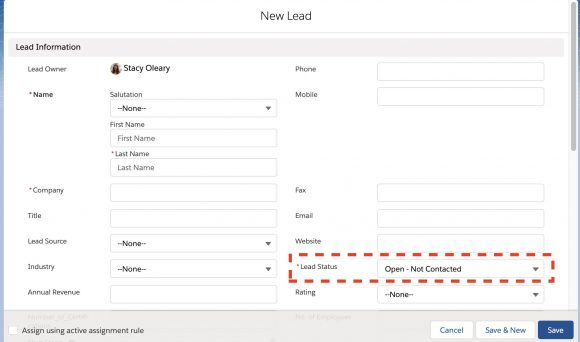
In fact, this field is so important that even brand new orgs have this field required on the Lead Page Layout by default! (Even Lead Source is not required, which is arguably just as important.) Integrated apps like Marketo, Hubspot, and Pardot base a lot of their automation off of this field. And your Sales team can update this field to tell you how it’s going with a particular prospect.
So, what’s the problem with this field? Well nothing. This field is great, it works fine. But if you’re a Marketer, and you only Market to your Leads, then the truth is, you’re only marketing to half your marketable database.
Where’s the other half, you might ask? It’s the Contact records. Contacts are people too, just like Leads. And at the end of the day, nearly all people in your database should likely be marketable for one purpose or another.
Tangent: I hear you asking, “Why would I need to market to existing Contacts, they’re already qualified! Or they’re already Customers!”
Well….. Maybe. Are you sure? You probably have at least:
- Your ‘already qualified’ Contacts, and your existing Customers
- Other people at a Customer company, that aren’t the ones involved in the sale, that might have no knowledge of your product or service
- Contacts that your Sales Reps have added manually that really should have been Leads
- Contact records for Partners, Vendors, Resellers, Distributors, and other business relationships
All of these kinds of people would be good candidates for a newsletter send, or new product announcements, webinar invites, etc.
So you can see, what we’re really boiling down to, one of the ultimate marketing questions:
Who is a marketable person?
If you think of your entire Salesforce Database (Leads + Contacts), what percentage of those people could you send marketing content to? The truth – probably all of them (excluding anyone who’s unsubscribed, or asked not to be contacted.) You may ultimately decide to only send certain types of content to certain types of people, but mostly, your entire database will be marketable.
End Tangent.
So now we know we should be looking at Leads and Contacts, we are at the right starting place. We know that Leads have the Lead Status field, and that gives us key information about the Lead. But what about Contacts?
Contacts do not have a Status field in Salesforce at all (out of the box.)
This is the field that we add to every single org we work in: Contact Status. Create a picklist on the Contact object, and make it an exact match of the Lead Status field. (Tip: make the API Name just “Status” this will make mapping easier in an integrated Marketing platform, and don’t forget to enable Field History!)

(You will still set a default value on the Contact, but the ‘converted’ check only applies to Leads.)
Once you have a Contact Status, you can now identify the Contact records that are Marketable or not, and your Sales or Support teams can easily indicate to Marketing what the Status of a Contact is. Some companies like to add an option to the list to indicate what kind of person they are, for example, “Existing Customer”, or “Partner”.
The final piece that is needed is automation to connect the Status on the Lead, to the Status on the Contact, at the moment the Lead is converted. Since Lead Status is a Standard Field, and Contact Status is a Custom Field, you cannot map them on the Field Mapping section in the Lead. We can do this instead with Process Builder.
1. Create a new process in the Process Builder
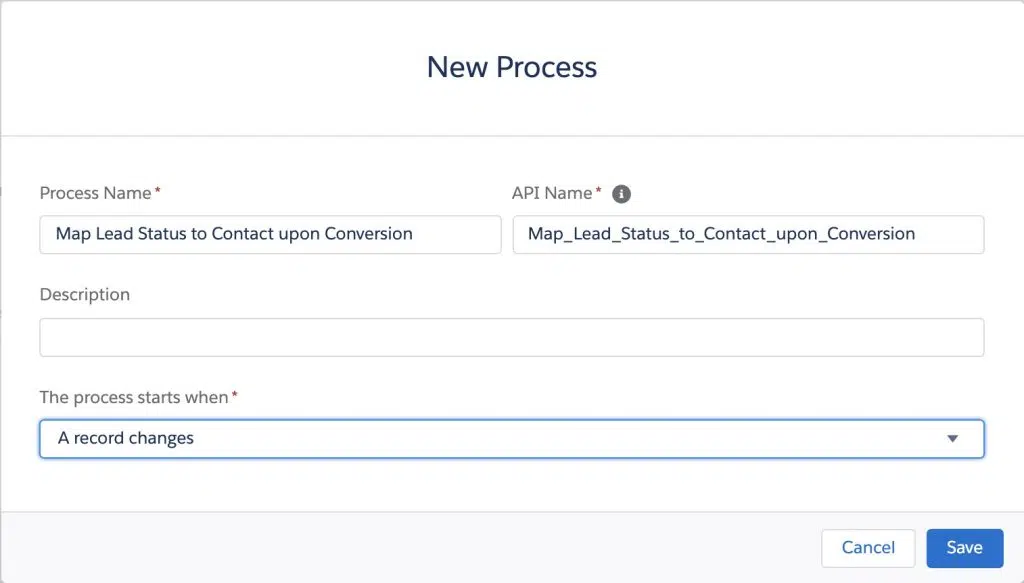
2. Click “Add Object”, then select the Lead object, and select “When a record is created or edited” then click “Save”
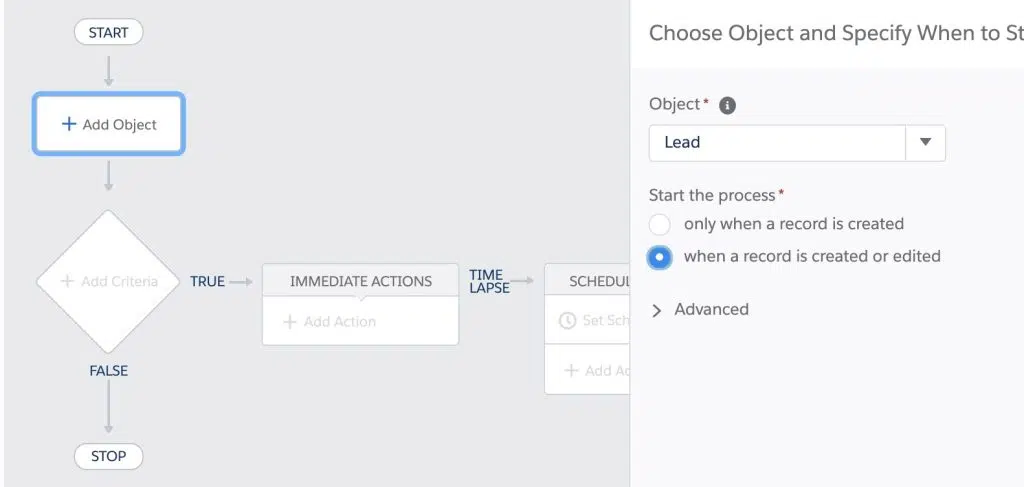
3. Click “Add Criteria” then name your criteria “Lead is Converted” set your criteria. Add the Converted field twice, once to indicate “Is changed” (true) and once to indicate that the checkbox itself is true.
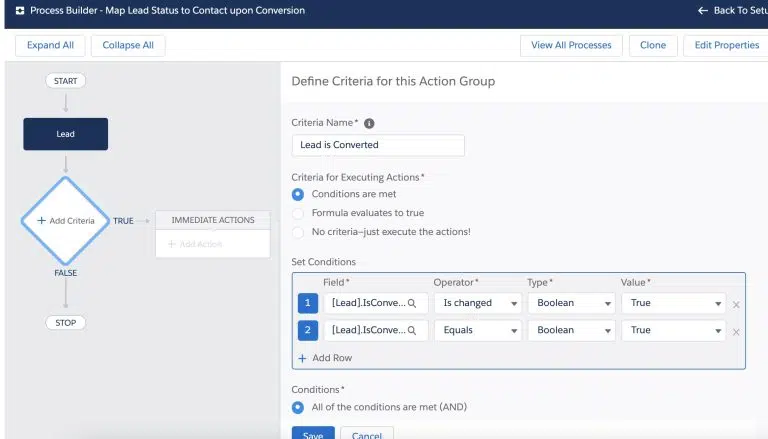
-
- Here’s detail referencing the Converted field.
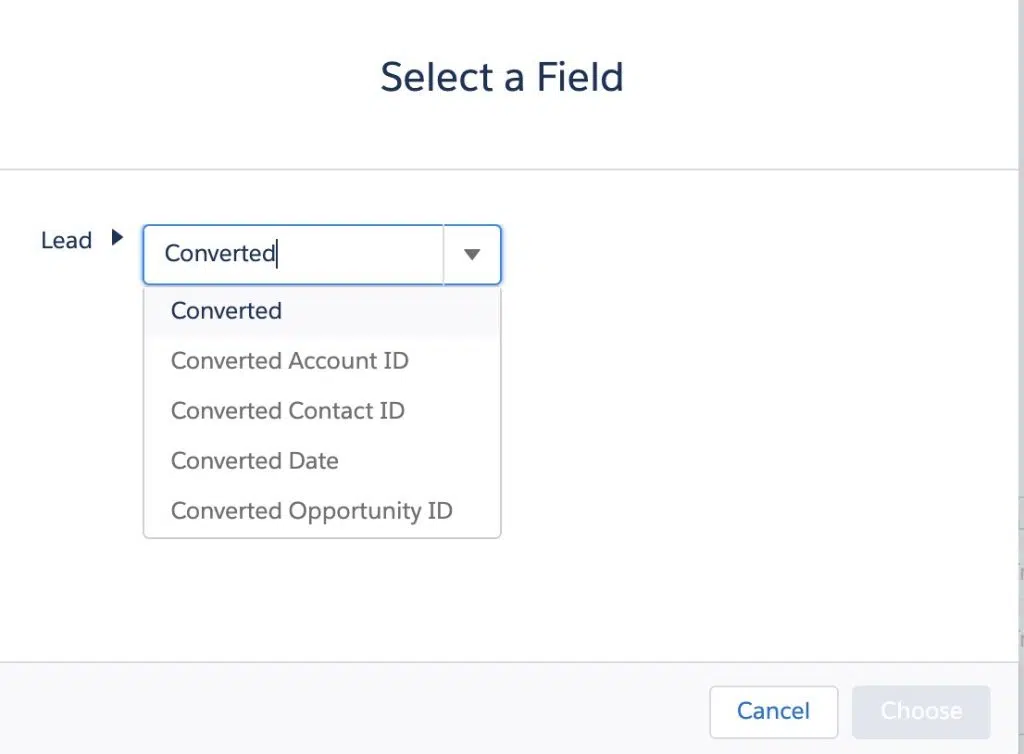
4. Click “Save”
5. For the Action Type, select “Update Records” and in Action Name, type in “Update Contact Status”. For Record type, click “Select Record Type to Update”

6. Choose “Select a record related to the Lead” then choose “Converted Contact ID” and click “Choose”
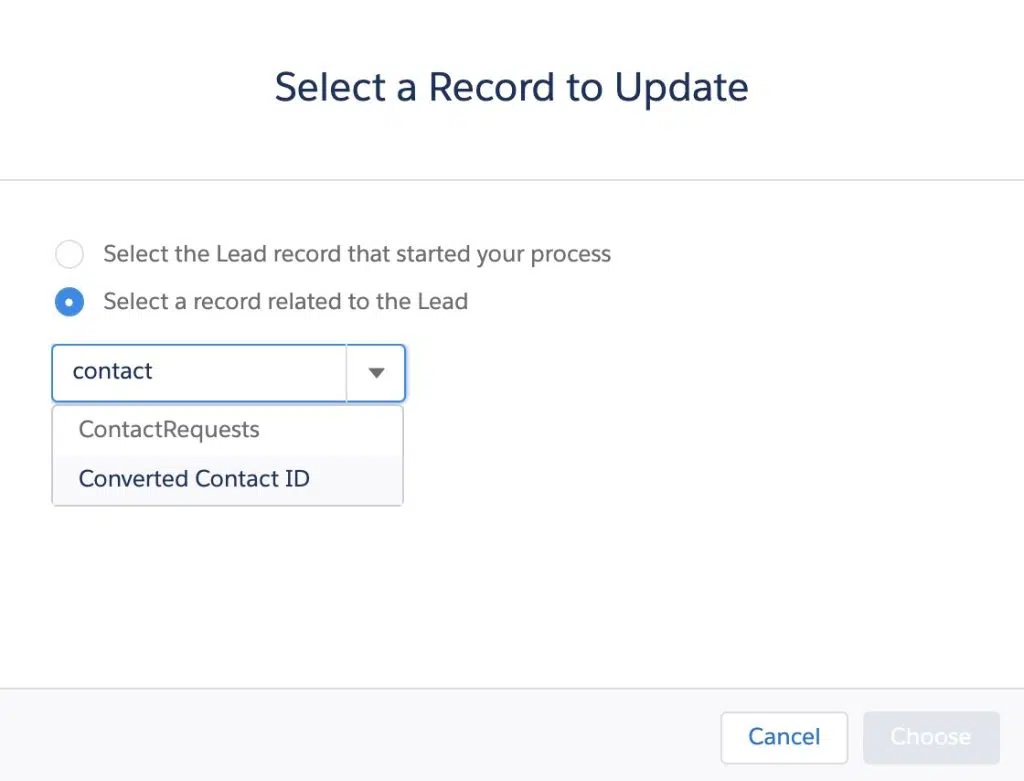
7. In the Criteria for Updating Records, select “No criteria-just update the records!”
8. In the fields section, Select the Contact Status field, in the Type, select “Field Reference” (because we’re referring to a field on a different object) and then in the Value, add the Lead Status field. Click “Save”
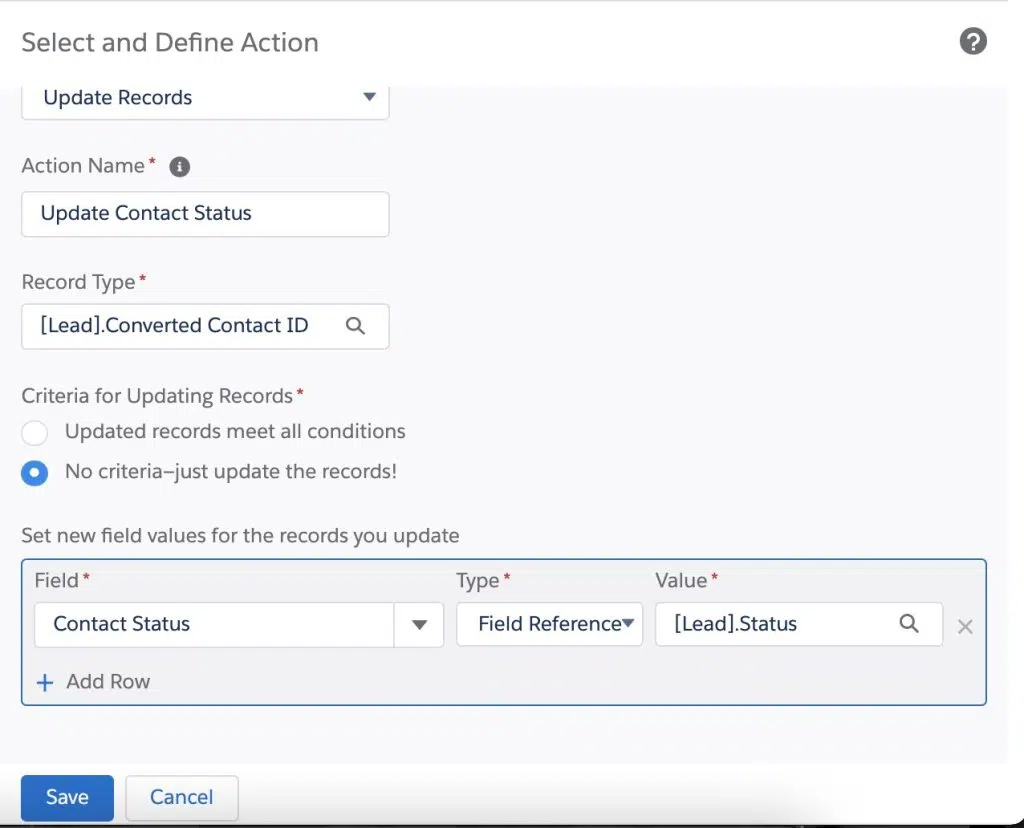
9. That’s it! Click Activate in the top right corner – your Process should look like this:
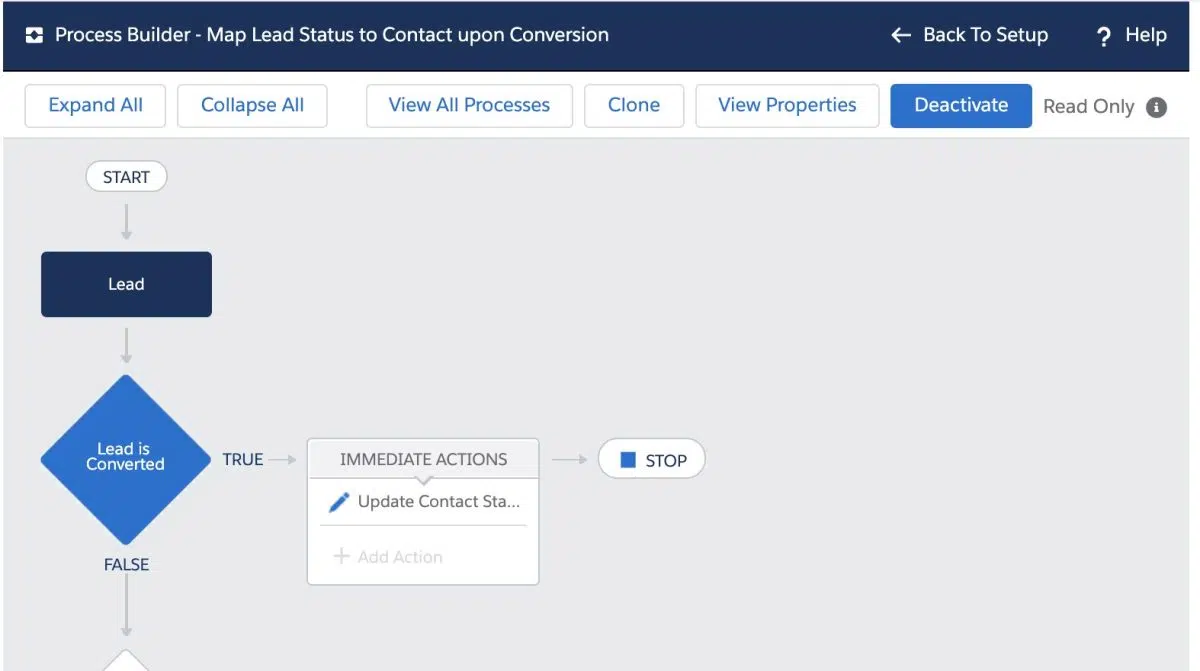
Ready to Attract, Nurture, and Convert?
Let’s work together for continued success